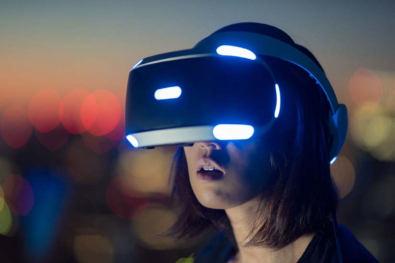
1 minute read
BRAIN READING ROBOTS
By Swasthiga R, 3rd Year
euroscience is no longer simply the science of the nervous system. It is the actual empirical science of self-awareness. Scientists and entrepreneurs have been working on tapping into the versatility of the human brain to bridge the void between human ability and objective possibility. The trends in neurotechnology are nothing short of stories from science fiction.
Advertisement
Baxter, a brainchild of Rethink Robotics and the inventors of the Roomba, is a robot that functions alongside humans to fill the gaps presiding in traditional automationalso known as a cobot. With the help of MIT’s Computer Science and Artificial Intelligence Laboratory (CSAIL), they developed Baxter to “read the minds” of subjects. The team of researchers led by
Daniela Rus, the director of CSAIL, have built Brain-Computer Interfaces to capture, identify and classify human brain waves.

These systems exploit a specific set of signals emitted by the brain called the error-related potentials (ErrPs), which arise when there is a disparity between human expectations and actual results. Baxter works in an ecosystem that requires the subject to wear EEG scalp electrodes. This EEG monitor is used to detect if the subject notices a mistake when the bot categorizes binary objects, under the span of 10 to 30 milliseconds. Instead of the user adapting their thoughts regarding the machine, the machine constantly analyses and classifies the user’s thoughts.
The Intelligence Advanced Research Projects Activity (IARPA) demonstrated that the human brain interprets and stores abstract concepts in a universal neural framework. Using Functional MRI (fMRI), the brain’s reaction to the triggers was visualized based on blood flow patterns to specific brain areas at different times. Harnessing this common ground, Scientists at Carnegie Mellon University have created a technology that can comprehend complex experiences consisting of linguistic inputs, human behaviour and other changes in the immediate environment to understand the category of thought under contemplation. After accessing the mental triggers for 239 sentences, the program predicted a 240th phrase with 87% accuracy.
Another company Looxid Link has created a noticeable range of VR-compatible brain-sensing technology. At its crux, this helps us create solutions by amalgamating the results of neurofeedback and virtual reality. The EEG signals from the brain are acquired by their devices and are used to create custom-made experiences for the user. A hands-free virtual environment is possible using this and eye-tracking technology. The realms of entertainment, neuromarketing, and healthcare could witness breakthroughs from this technology.
With such immaculate advances in the BCI discipline, an inevitable disruption like human-machine interaction is waiting to occur. Integrating these applications with appropriate ethical agendas will bring out changes in the factions of rehabilitation, recovery, lifestyle and automation.









